#daniel kelm
Explore tagged Tumblr posts
Text
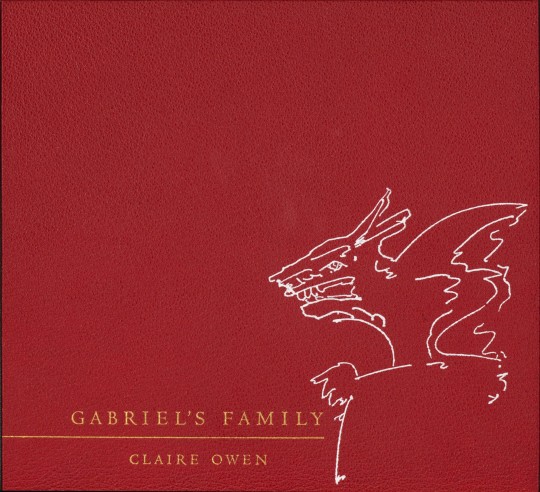

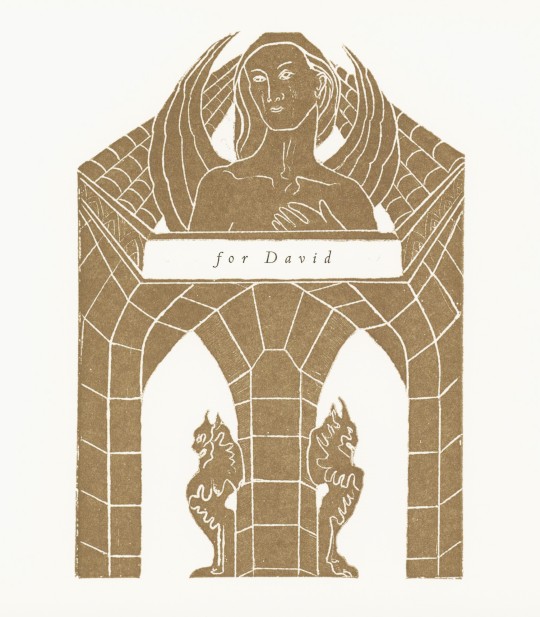
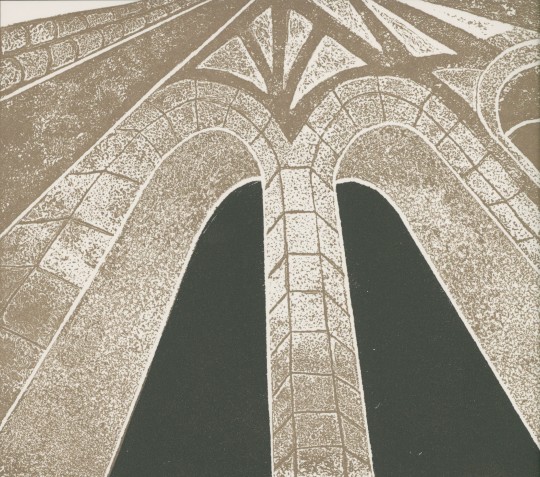


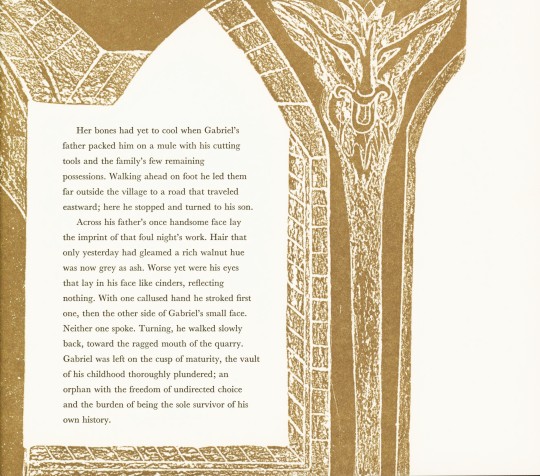
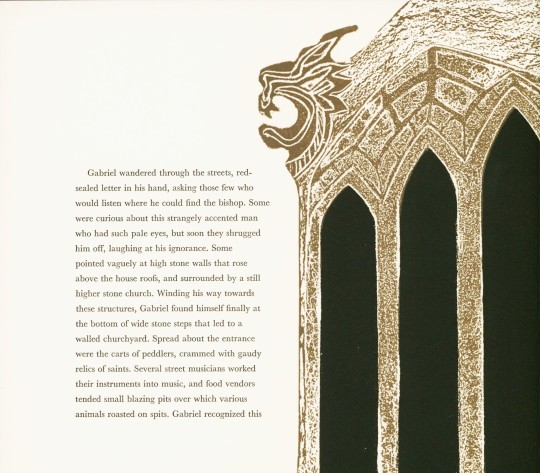

It's Fine Press Friday!
This week’s Fine Press Friday highlights another book from the estate of our late friend Dennis Bayuzick. Gabriel’s Family was created by Philadelphia artist and poet Claire Owen in 1992 at her Turtle Island Press in an edition of 52 copies signed by Owen and her collaborator Daniel Tucker. It tells the story of a stone cutter who creates beautiful, but grotesque creatures and eventually believes them to be a part of his family and a completion of himself. His solitude, however, is threatened by being evicted by the bishop, and events unfold from this predicament.
The images are relief etchings prints created by Owen herself. The presswork is by Art Larson of Horton Tank Graphics, in Hadley, Massachusetts. The text is set in Baskerville and the titling is done in Centaur. The book was bound in red Nigerian goatskin, with a brown spine, stamped in gold and white foil, by Daniel Kelm at Wide Awake Garage in Easthampton, Massachusetts. The story was originally published in The Painted Bride Quarterly of Philadelphia in fall of 1991.
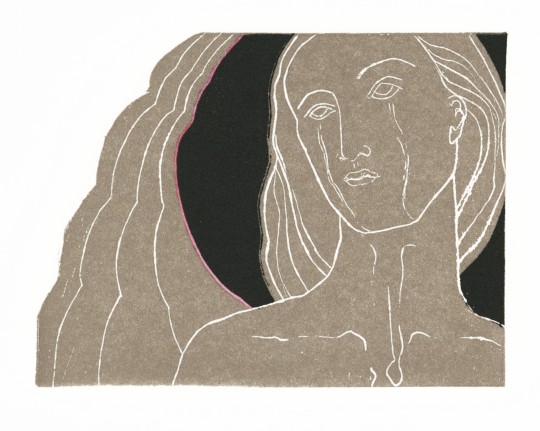


View other books from the collection of Dennis Bayuzick.
View more Fine Press Friday Posts.
– Sarah S., Special Collections Graduate Intern
#Fine Press Friday#fine press fridays#Dennis Bayuzick#Claire Owen#Turtle Island Press#Daniel Tucker#Art Larson#Horton Tank Graphics#Baskerville#Centaur#Daniel Kelm#Wide Awake Garage#The Painted Bride Quarterly#fine press printing#fine press books#fine press publishing#relief etching#etching#Sarah S.
27 notes
·
View notes
Text

Timothy C. Ely, Synesthesia, Text by Terence McKenna, Granary Books, New York, NY, 1992 [Peter Keisogloff Rare Books, Inc., Brecksville, OH. Art: © Timothy C. Ely]





Edition: 1-55 for sale, G-Z hors commerce Typography & Stratified Letterpress Printing: Philip Gallo at the Hermetic Press Bookbinding as a Teleological Process: Daniel E. Kelm & staff at The Wide Awake Garage
Plus: Victoria and Albert Museum, London; Burnside Rare Books, Portland, OR
#graphic design#art#mixed media#drawing#visual writing#geometry#book#cover#book cover#back cover#timothy c. ely#granary books#philip gallo#hermetic press#daniel e. kelm#wide awake garage#1990s
22 notes
·
View notes
Text
Bookmarking Book Art - Ouroboros Press
“Folding Plates in Esoteric Literature” William Kiesel, founder of Ouroboros Press, has an insightful essay with impressive examples of the “fold out” device here. Among the examples are Manly P. Hall’s The Secret Teachings of All Age and Codex Rosicrucis Elias Ashmole’s Theatrum Chemicum Britannicum Zoroaster’s Telescope: The Key to the great divinatory Kabbala of the Magi Napoleon’s Book…

View On WordPress
0 notes
Text
Com entrada gratuita, o Festival da Canção de Balneário Camboriú vai movimentar o Teatro Municipal Bruno Nitz de 25 a 27 de novembro. Disputam o evento 30 composições de estilo livre, originais, inéditas e com música e letra em língua portuguesa. O festival, que está na 10ª edição, premia canções de autores maiores de 18 anos e residentes em Santa Catarina. Na quinta-feira passada (11), foi sorteada a ordem de apresentação dos artistas (confira a programação completa no fim do texto). Serão duas semifinais (25 e 26 de novembro) e a final (27 de novembro). Os três primeiros colocados ganharão dinheiro e troféu. Já melhor intérprete, melhor instrumentista e autor da melhor letra receberão troféu. Nos três dias, o festival começa às 20h. A capacidade de público será reduzida em 30% por causa da pandemia. Também deverão ser cumpridas as medidas sanitárias para evitar a disseminação da Covid-19. O evento tem como novidade nesta edição a figura de uma madrinha, que será a cantora Karinah. A artista faz sucesso no país cantando com ícones do samba. Karinah vai se apresentar na final do festival. PROGRAMAÇÃO 25 de novembro, quinta-feira - a partir das 20h Cerimônia de abertura Show de abertura: Laura Schadeck e banda Apresentação de 15 canções classificadas (veja abaixo) Apresentações de dança: Space Dance Studio Julio Leduc – Instrumental Anúncio de cinco canções finalistas 26 de novembro, sexta-feira - a partir das 20h Show de abertura: Maykow Santos - Show Acústico Catarinense Apresentação de 15 canções classificadas (veja abaixo) Apresentação da cantora Marilice Caldat Show de encerramento: Maykow Santos - Show Acústico Catarinense Anúncio de cinco canções finalistas Sorteio da ordem de apresentação das canções finalistas 27 de novembro, sábado - a partir das 20h Final Show de abertura: Banda Maria do Cais Apresentação especial da Madrinha do Festival, Karinah Apresentação das 10 canções finalistas Apresentação de dança: Grupo Charruas Show de encerramento: Banda Maria do Cais Cerimônia de premiação ORDEM DE APRESENTAÇÃO DAS COMPOSIÇÕES CONCORRENTES NAS DUAS SEMIFINAIS Dia 25/11 1. Marcos Kelm Do Nascimento – Baile Do Cola Atada 2. Alberto Damian Montiel – Vento De Luz 3. Laura Tereza Tomasini Schneider – Meu Sonho 4. Maison Jacinto Freitas – Vou Deixar Pra Lá 5. Rafael Bodanese Cogo – Estilo Beija-Flor 6. Gabriel Virtuoso De Oliveira – O Mundo Cabe Em Nossas Mãos 7. Amanda Zaions Cadore – Arrebentação 8. Noemi Da Silva Carvalho – Não É Preciso Ter 9. William Molin – Nós Vamos Vencer 10. Leandro De Oliveira Nakagawa – Quando Isso Tudo Passar 11. Gandhi De Oliveira Martinez – Um Dia Normal 12. Leonardo Schmitt Vieira – Morada De Sonho 13. Bárbara Trelha Oliveira – Cartas De Wether 14. Jorge Heleno Fidélis Pereira – Não Quero Mais Andar Sozinho 15. Augusto Da Silveira – Uma Ilha Dia 26/11 1. Jose Guanaes Sepulveda – Arritmia 2. Mauricio Coldebella – Livianito 3. Roberta Kelly Da Costa Arantes – Mamãe Lavadeira 4. Priscilla Dinah Costa Lourenço – Espelhos 5. Gustavo Dos Santos Merisio – Paz Interior 6. Ricardo Batista Dos Santos – Só Um Estranho 7. Robson Coldebella – Canção Pra Matear Com Deus 8. Elisa Maria Cordeiro – Deusa Música 9. Glenio Marques Pinto – Verso 10. Juan Daniel Isernhagen – Tenho Confiança Na Gente Do Sul 11. Victor Hugo Praun – Poder Do Amor 12. Edegar Soares Rodrigues – Meu Canto 13. Daniel De Miranda – Alguém 14. Moises Peteffi – Malabarista De Primeira 15. Mario Rodrigo Jacinto Freitas – Distopia ___________________ Fundação Cultural de Balneário Camboriú (47) 3267-7011 Diretoria de Comunicação Jornalista: Silvana de Castro Foto: Celso Peixoto/Arquivo PMBC (47) 3267-7022 www.instagram.com/prefeituradebc FOTOS Fonte: Prefeitura de Balneário Camboriú
0 notes
Text
Artist Books
Pre - 2000
1. "Songs of Innocence and of Experience" by William Blake
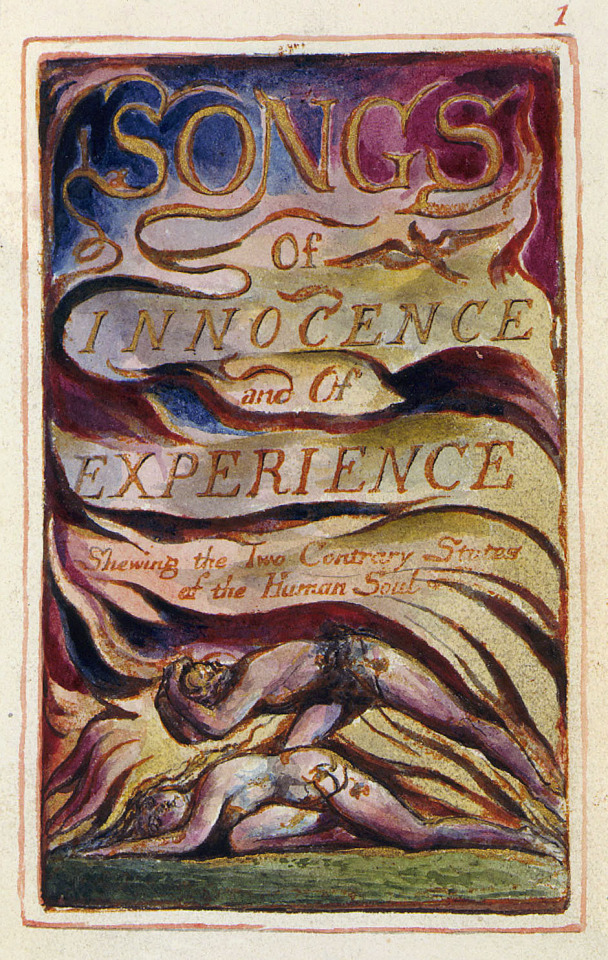
Songs of Innocence and of Experience is an illustrated collection of poems by William Blake. It appeared in two phases. A few first copies were printed and illuminated by William Blake himself in 1789; five years later he bound these poems with a set of new poems in a volume titled Songs of Innocence and of Experience Shewing the Two Contrary States of the Human Soul.
"Innocence" and "Experience" are definitions of consciousness that rethink Milton's existential-mythic states of "Paradise" and "Fall". Often, interpretations of this collection centre around a mythical dualism, where "Innocence" represents the "unfallen world" and "Experience" represents the "fallen world".Blake categorizes our modes of perception that tend to coordinate with a chronology that would become standard in Romanticism: childhood is a state of protected innocence rather than original sin, but not immune to the fallen world and its institutions. This world sometimes impinges on childhood itself, and in any event becomes known through "experience", a state of being marked by the loss of childhood vitality, by fear and inhibition, by social and political corruption, and by the manifold oppression of Church, State, and the ruling classes. The volume's "Contrary States" are sometimes signalled by patently repeated or contrasted titles: in Innocence, Infant Joy, in Experience, Infant Sorrow; in Innocence, The Lamb, in Experience, The Fly and The Tyger. The stark simplicity of poems such as The Chimney Sweeper and The Little Black Boy display Blake's acute sensibility to the realities of poverty and exploitation that accompanied the "Dark Satanic Mills" of the Industrial Revolution.
William Blake (28 November 1757 - 12 August 1827)

Poet, painter, engraver, and visionary William Blake worked to bring about a change both in the social order and in the minds of men. Though in his lifetime his work was largely neglected or dismissed, he is now considered one of the leading lights of English poetry, and his work has only grown in popularity. In his Life of William Blake (1863) Alexander Gilchrist warned his readers that Blake “neither wrote nor drew for the many, hardly for work’y-day men at all, rather for children and angels; himself ‘a divine child,’ whose playthings were sun, moon, and stars, the heavens and the earth.” Yet Blake himself believed that his writings were of national importance and that they could be understood by a majority of his peers. Far from being an isolated mystic, Blake lived and worked in the teeming metropolis of London at a time of great social and political change that profoundly influenced his writing. In addition to being considered one of the most visionary of English poets and one of the great progenitors of English Romanticism, his visual artwork is highly regarded around the world.
Because Blake's later poetry contains a private mythology with complex symbolism, his late work has been less published than his earlier more accessible work. The Vintage anthology of Blake edited by Patti Smith focuses heavily on the earlier work, as do many critical studies such as William Blake by D. G. Gillham.
The earlier work is primarily rebellious in character and can be seen as a protest against dogmatic religion especially notable in The Marriage of Heaven and Hell, in which the figure represented by the "Devil" is virtually a hero rebelling against an imposter authoritarian deity. In later works, such as Milton and Jerusalem, Blake carves a distinctive vision of a humanity redeemed by self-sacrifice and forgiveness, while retaining his earlier negative attitude towards what he felt was the rigid and morbid authoritarianism of traditional religion. Not all readers of Blake agree upon how much continuity exists between Blake's earlier and later works.
Psychoanalyst June Singer has written that Blake's late work displayed a development of the ideas first introduced in his earlier works, namely, the humanitarian goal of achieving personal wholeness of body and spirit. The final section of the expanded edition of her Blake study The Unholy Bible suggests the later works are the "Bible of Hell" promised in The Marriage of Heaven and Hell. Regarding Blake's final poem, Jerusalem, she writes: "The promise of the divine in man, made in The Marriage of Heaven and Hell, is at last fulfilled."
John Middleton Murry notes discontinuity between Marriage and the late works, in that while the early Blake focused on a "sheer negative opposition between Energy and Reason", the later Blake emphasised the notions of self-sacrifice and forgiveness as the road to interior wholeness. This renunciation of the sharper dualism of Marriage of Heaven and Hell is evidenced in particular by the humanisation of the character of Urizen in the later works. Murry characterises the later Blake as having found "mutual understanding" and "mutual forgiveness".
Other Works:
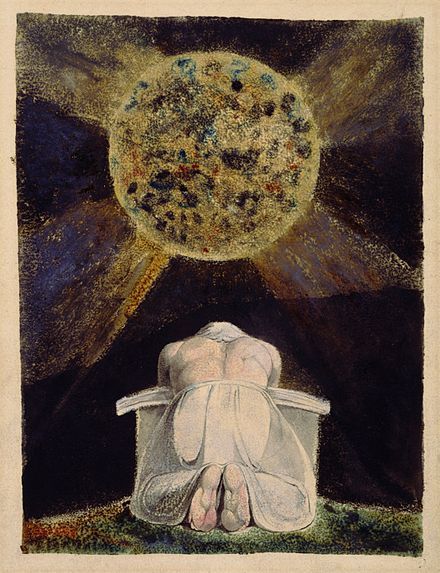
1. The archetype of the Creator is a familiar image in Blake's work. Here, the demiurgic figure Urizen prays before the world he has forged. The Song of Los is the third in a series of illuminated books painted by Blake and his wife, collectively known as the Continental Prophecies.

2. Blake's The Great Red Dragon and the Woman Clothed with Sun (1805) is one of a series of illustrations of Revelation 12.
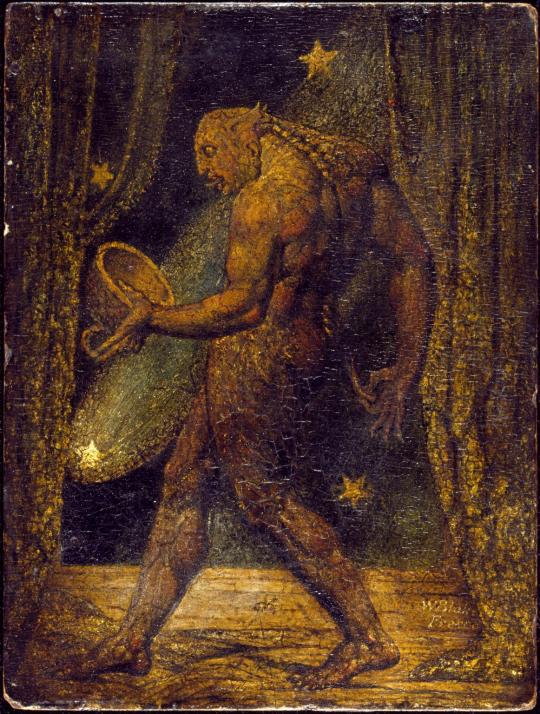
3. The Ghost of a Flea, 1819–1820. Having informed painter-astrologer John Varley of his visions of apparitions, Blake was subsequently persuaded to paint one of them. Varley's anecdote of Blake and his vision of the flea's ghost became well-known.
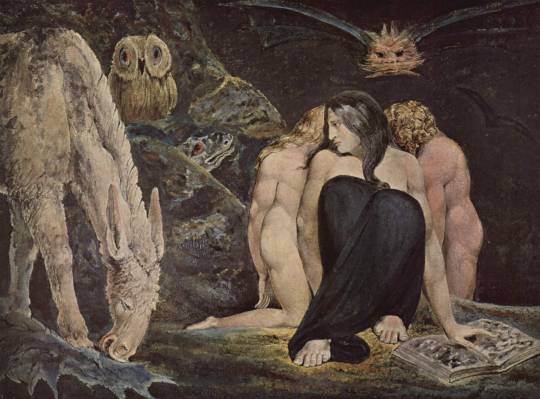
4. The Night of Enitharmon's Joy, 1795; Blake's vision of Hecate, Greek goddess of black magic and the underworld.
2. "Investigations—The Four Elements: Earth" by Daniel E. Kelm and Timothy C. Ely
The series of unique books Investigations: The Four Elements draws upon Kelm’s and collaborator Tim Ely’s shared interest in alchemy and sacred geometry. Each book consists of a set number of interlocking panels that can be assembled into one or more shapes forming Platonic solids.
The Platonic solids—tetrahedron, cube, octahedron, dodecahedron, and icosahedron—are polyhedrons with congruent sides, edges, and angles. Although these five shapes were known prior to Plato, they are specifically mentioned in his dialogue Timaeus. In this work, Plato describes these solids as the building blocks of matter, equating the tetrahedron with the element of fire, the cube with earth, the octahedron with air, the icosahedron with water, and the dodecahedron with the materials that form the stars and the cosmos.

The closed box.
Book sculpture by Kelm.
Painting and surface treatments by Ely.
Acrylic and ink on paper, with airbrush acrylics, aluminium, brass tubing and rod, thread, and wire edge binding.
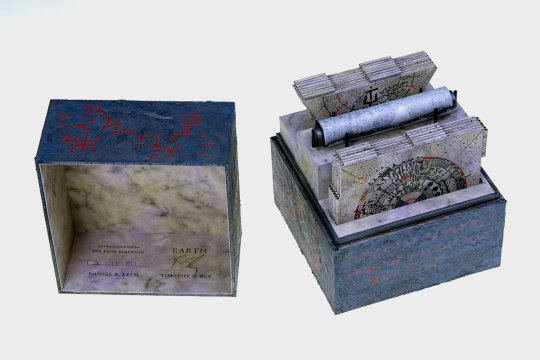
A first glimpse inside the box reveals shaped page panels and a metal tube with paper wrapped around it.
One slot in the box holds the square page panels and a second slot holds the triangular page panels.
The Investigations series is the earliest example of Kelm bindings with no permanent hinging; i.e., the pins can be removed and the pages completely disassembled.
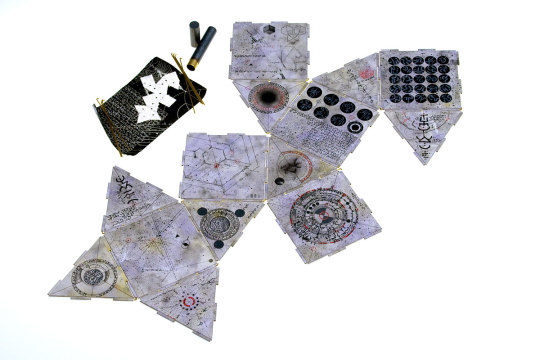
The metal tube contains the pins that will be used to hold the binding together.
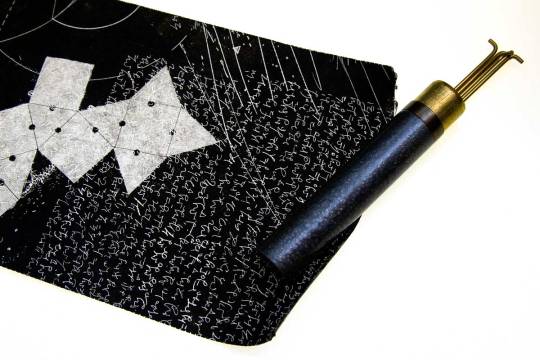
The paper scroll depicts a possible configuration of pages.
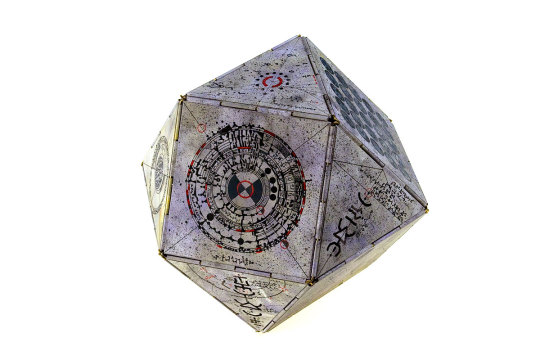
Here you see all the pages combined to form a cube-octahedron—which means that it is an integration of a cube and an octahedron.
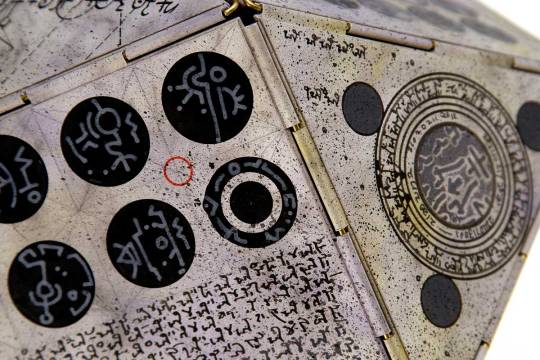
Detail of the painting and hinging.
Daniel Kelm
Daniel Kelm is a book artist, sculptor, book binder, and teacher. His intricate, detailed works invite unconventional ways of reading—which can resemble unearthing a mystifying treasure or solving a 3-D puzzle—and they condense wondrous topics that have laid between book covers for centuries—like alchemy, mathematics, science, metaphysics, maps, and illustrations—within visually astonishing bindings.
He invented the widely-used “wire-edge binding” and is the founder and proprietor of Wide Awake Garage studio in Easthampton, Massachusetts, where he designs and produces artist’s books and innovative sculptural bindings. His work has been shown nationally for over thirty years, and he has taught and lectured at universities and libraries in the U.S. and Europe.
Interview:
Lyra Kilston: Your work expands the form of what most people think of as a book: your works don’t need words, or images, or to open in an arc. In your view, what is the outer limit of having something remain a ‘book’?
Daniel Kelm: Books are a wonderful vehicle for telling stories. Most often the book artist constructs the book around their or an author’s story. Many of my books contain no recognizable words but are made of shapes that allow wide-ranging flexibility and movement. They are actually quite toy like, and if successful engage the “reader” in the same physical and interactive way as do toys. During that play, these wordless books can inspire someone to discover their own voice and story. I love watching someone interact with one of my sculptural books, then suddenly stop to tell one of their own stories.
What are some of your favourite materials to work with?
I love working with vegetable-tanned goat skin, a material commonly used in traditional fine bookbinding. For non-traditional work I tend towards metal, glass, and plastic. I’ve not found any material to be too rare or impossible to find and work with; there is always a way to invite it to play. In all cases, whatever the material used, it is important to discover its voice and to let that voice support the story being told.
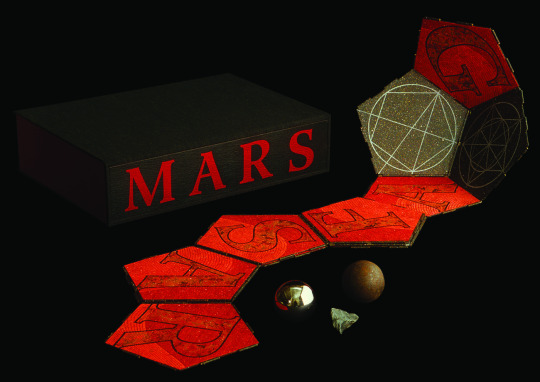
Mars, 1991–2005, Daniel Kelm. 11.5 x 8 x 3 in. (closed). Contents: box, accordion book partially pinned together, and three objects representing various aspects of Mars. Materials: paper board, paper, acrylic paint, thread, stainless steel wire, dry-mount adhesive, iron nickel meteorite, chrome steel ball bearing, Civil War iron canister ball, felt, fibre board, cloth. Techniques: wire edge binding, painting, photocopy transfer, airbrush, paste paper, silk screen printing, letterpress printing. Voice of Mars text by Taz Sibley. Letterpress printing by Art Larson.
What themes have you been working with recently?
After 20 years immersed in chemistry, I began a thirty-year study of alchemical processes that has inspired many of my artist’s books and sculpture. Experimentation with plant alchemy (spagyric alchemy) led me to an appreciation of pharmacy. In my latest work I’m exploring chemical and pharmaceutical processes through installations combining laboratory apparatus with antiquarian books describing the process.
I look at the installations as functional sculpture. The animating voice of each piece is that of the chemist, pharmacist, researcher, or lab worker who developed and explained the particular approach, so their name is usually intimately associated with it.
What is your research process like?
I often start with a description of a process or an image of the associated apparatus and then find out everything that I can about it, including details about the life of the person who developed it. My work always tries to integrate the personal connection (through the life of the individual associated with the science involved), the historical (by choosing a process that has been proven through its historical record to be significant to our lives), the aesthetic (as seen in its sculptural quality), and the technical (the details of the process and materials themselves).
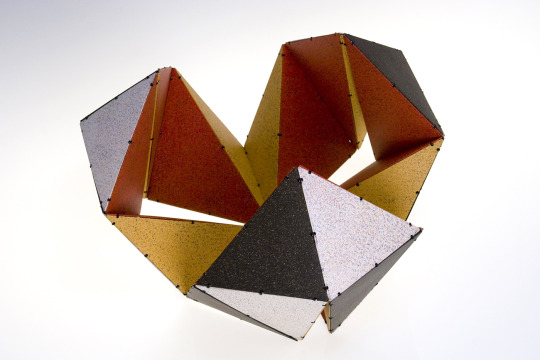
Relgio Mathmatica, 1990–2007, Daniel Kelm. 9 x 9.5 x 9.5 in. Materials: paper and paper board, stainless steel wire, thread, English yew wood, paint, leather. Techniques: wire edge binding, spattering, paste paper. Photographer: Jeff Derose, One Match Films. Binding assistance by Kylin Lee. This video of Kelm manipulating the binding shows how the “Lotus Flower” configuration closes—the red cube moves to the inside, and the black and white surfaces to the outside.
Sources used:
https://en.wikipedia.org/wiki/Songs_of_Innocence_and_of_Experience
https://en.wikipedia.org/wiki/William_Blake#Development_of_his_views
https://www.poetryfoundation.org/poets/william-blake
http://www.danielkelm.com/core/wideawake/3/1#/galleries/2
http://www.danielkelm.com/core/wideawake/3#/entry/wide-awake-garage-videos
https://blogs.getty.edu/iris/alchemical-book-artists-at-work-part-2-daniel-kelm/
Post - 2000 Artist Books
1. "Don't Lose Heart" by Anne Gilman
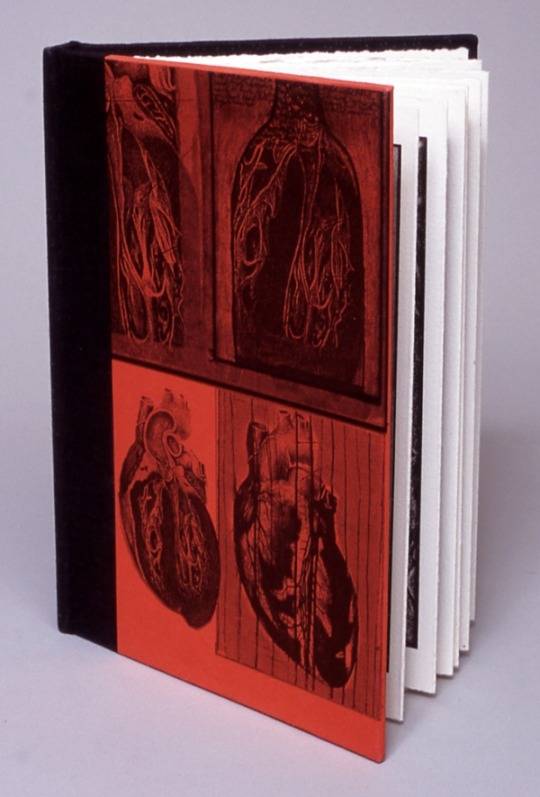
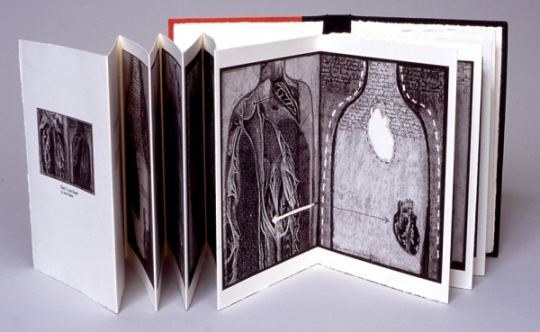
Don't Lose Heart 2001 mixed media digital accordion book printed on Arches cover stock, edition of 10 9" x 6" x 1" Don’t Lose Heart contains a play on expressions we use with the word "heart". Below is the text that appears at the end of the book:
You can have a change of heart, a heart of gold, a heavy heart, a heart to heart.
You can eat one’s heart out, lose heart, have a heart, take heart.
In my heart of hearts, with a heavy heart, cross my heart, from the bottom of my heart, Don’t lose heart.
Anne Gilman
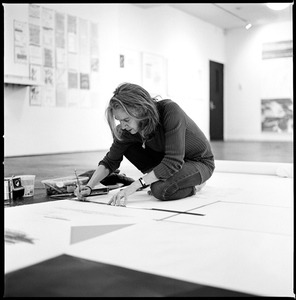
Anne Gilman is a Brooklyn-born artist who works in varying formats that include large-scale drawings and multi-panel projects. The political, social and personal concerns that fuel all forms of moods, worries, and psychological states of being are the materials that feed her work. She begins by using her own thoughts and experiences as a starting point for considering larger issues of why we do what we do, what matters and how we can get lost in distractions that are ultimately unimportant. The resulting drawings are a mapping of information, thought and emotion.
Other Works:
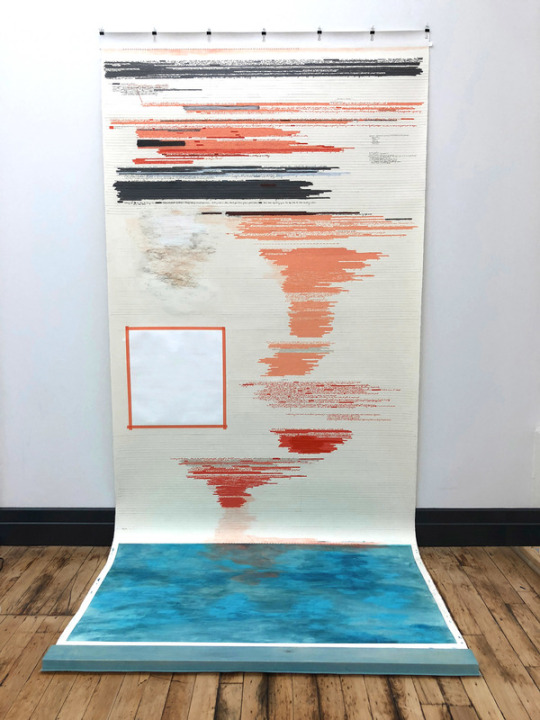
Sundowning 2018 pencil, graphite, paint, tape, ink, on paper with hand-stained wood 134 x 60 inches
Sundowning (also known as a sundown syndrome) = a neurological phenomenon associated with increased confusion and restlessness in patients with dementia. It occurs in the late afternoon/early evening. Symptoms include increased agitation; a person may become more upset/anxious/confused/disoriented/suspicious
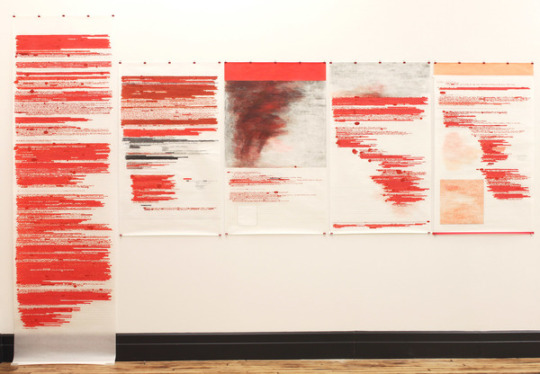
Boiling point (5 works in this series) 2018 ink, pencil, tape on mulberry paper One section is 94½ x 27½ inches and the other four are 46 x 27½ inches
“A part of the writing in these drawings focus on issues of anger and rage. I was thinking about the levels of discontent that people live with, whether triggered by relatively insignificant incidents or by a build-up of frustration over time, and the need for an appropriate outlet to diffuse and address the intensity, before it erupts in explosive ways.” A. Gilman

this place / this hour 2019 Coloured pencil, graphite, ink, and washi tape on mulberry paper 321 x 27 inches
“I was invited to do a project commemorating the 200th anniversary of Walt Whitman’s birth. My research resulted in this two-sided 27-foot scroll and a limited-edition artist book. In both projects Walt Whitman’s words, process and internal struggles are intertwined with my own. This scroll is suspended from the ceiling and extends across the floor in two directions. This view shows the non-text side of the scroll on the left side and the text-based side of the scroll on the right side.” A. Gilman
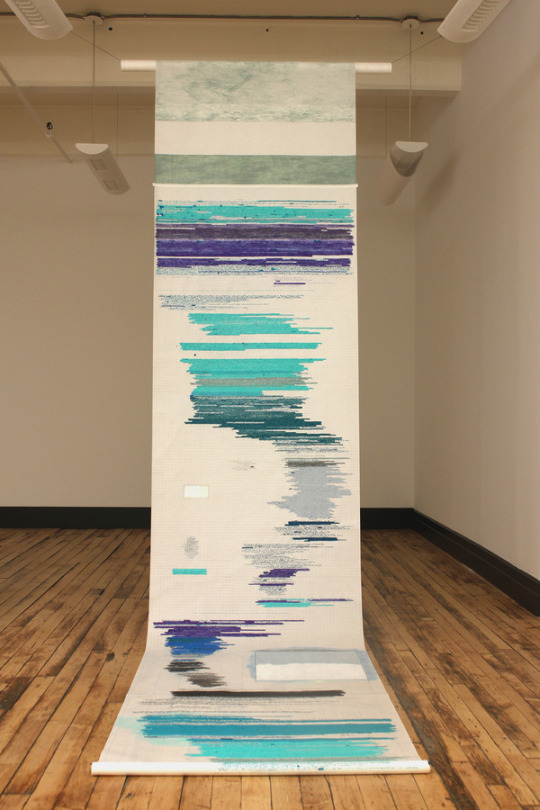
Up close / in the distance / now 2018 pencil, graphite, tape, ink, BIC ballpoint pen, matte medium on mulberry paper 340 x 38 inches
This scroll suspends from the ceiling with one side showing primarily the text part of the work and the other side showing non-text drawing. This view shows the text side. The next two images show other views.

Up close / in the distance / now 2018 pencil, graphite, tape, ink, BIC ballpoint pen, matte medium on mulberry paper 340 x 38 inches
This view shows the scroll from the side. The next view shows the non-text side of the drawing.
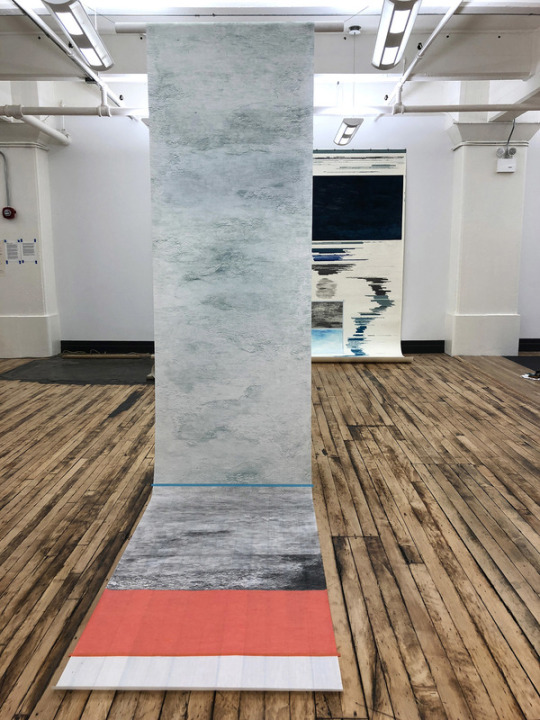
Up close / in the distance / now 2018 pencil, graphite, tape, ink, BIC ballpoint pen, matte medium on mulberry paper 340 x 38 inches
This is a view of the non-text side of the drawing.
2. “Second Road” by Timothy C. Ely
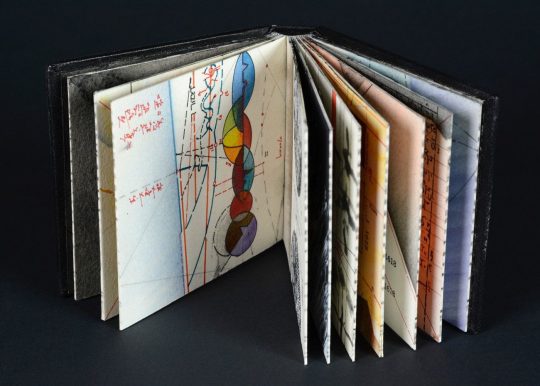
Second Road, 2016, Timothy C. Ely. Drum leaf binding, full leather, watercolor, dry pigments, gold and ink on paper. All images in this post courtesy of the artist.
Timothy C. Ely
Ely studied design and printmaking and has been making books for over forty years. (He also owns sixty books on baking bread, his other passion that relies on precision and a bit of alchemical magic.) He has shown his work at museums around the country and it is in many private and public collections.
Interview:
Lyra Kilston: Do you have a favorite rare or ancient book? Have you been able to see it in person?
Timothy Ely: The Gutenberg forty-two-line Bible, which I saw in New York’s public library. I have handled this book, and revel in the idea that it is a point on the historical timeline where we switched over from the book as a handmade ideal to an industrial product. My work is embedded in the ideas of pre-Gutenberg technology, with as much of the production being done by hand and the content generated by long contemplation and the intuitive handling of method.
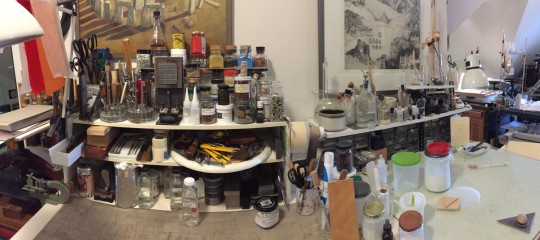
Timothy C. Ely’s studio, 2016.
You work with fascinating materials, like animal skin bindings and nineteenth-century paints. What are a couple of your favorite materials to work with? Is there a material that you’d love to work with, but it’s too rare or obsolete?
I envision making a large vellum book using a contemporary variant on an old technology. I have a vellum model in the works which has been in the press for sixteen years. Vellum is expensive and requires much animal husbandry to provide foliation for the artist. This book-to-be needs patronage.
Other favorites are rare pigments made of materials from obscure locations. Not so much for what they materially do but what associations are formed. Meteoric dust (I have some from a meteor that fell around the time of Columbus), sand from Asian deserts, soil from the gardens of bookbinders and monasteries. My collection is vast and my spies numerous. This material adds form to covers but on occasion finds its way into the interior.
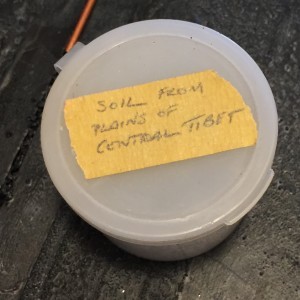
Soil from the plains of Central Tibet, one of many unique materials in Ely’s studio.
Your work takes inspiration from a range of sources, from ancient runes to science fiction to the spiral pattern on a pine cone. What themes have you been working with recently?
I am attempting to render the invisible, to describe some ideas like 4-D architectural renderings and diagrams of the ineffable. By using well-tested ideas such as symbolic visual descriptions, I can make an foray into how we might imagine the path of a particle or a hunch.
What is your research process like?
My process is to draw, fail, evaluate, draw again, erase, redraw, abandon hope, find the path again, read something, draw more, melt something or hammer it together, fuse things, make some bread, draw again, and continue to see what shows up. Often up, sometimes down—it is never a linear process, but one that works by continuing to work with purpose against a plane which cannot easily be scaled.
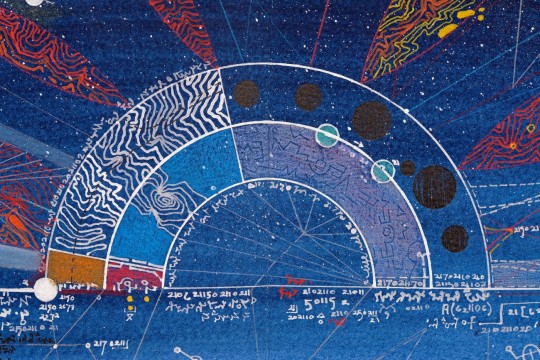
The Observatory, 2006, Timothy C. Ely. Ink, gouache, and dry pigment on paper.
Sources used:
https://www.annegilman.com/
https://www.annegilman.com/artist-books/limited-edition-artist-books/view/57
https://www.annegilman.com/artist-books/limited-edition-artist-books/view/58
https://www.annegilman.com/scroll-drawings/scrolls-on-and-off-the-wall/1
https://www.annegilman.com/scroll-drawings/scrolls-on-and-off-the-wall/2
https://www.annegilman.com/scroll-drawings/scrolls-on-and-off-the-wall/6
https://www.annegilman.com/scroll-drawings/scrolls-on-and-off-the-wall/3
https://www.annegilman.com/scroll-drawings/scrolls-on-and-off-the-wall/4
https://www.annegilman.com/scroll-drawings/scrolls-on-and-off-the-wall/5
https://blogs.getty.edu/iris/alchemical-book-artists-at-work-part-1-timothy-c-ely/
3 notes
·
View notes
Text
ZOT HABERAJA / SIMJAT TORA
bs'd
Shalom.
La idea de esta semana de mi libro ‘Healing Anger’ es:
"Loa padres debemos entender la importancia de reprender a los hijos. La disciplina aplicada apropiadamente no es crueldad, es educacion (jinuj). La disciplina es necesaria para desarrollo emotional de los niños, porque les enseña el concepto fundamental del respeto a la autoridad."
El link para comprar mi libro es http://www.feldheim.com/healing-anger.html Si quieres comprarlo en Israel contactame. Por favor no dudes de imprimir copias de este ensayo y distribuirlas al público en tu sinagoga local. Mi revisión semanal llega a más de 5.000 personas en Inglés y Español en todo el mundo. Les ofrezco a todos la oportunidad de compartir la mitzvá de honrar a un ser querido, patrocinando mi Divre Tora, para shelema refua (curación), o shiduj, Atzlaja. Siéntete libre de reenviar este Divre Tora a otros correligionarios. Tengan un Shabat Shalom con mucha salud y Jag Sameaj.
ZOT HABERAJA / SIMJAT TORA-La Lección Final
El último pasuk de la Torá es una alabanza para Moshe Rabenu [1], "la mano fuerte y el poder asombroso que Moshe realizó ante los ojos de todo Israel". Rashi explica citando el Midrash que, "ante los ojos de todo Israel" se refiere a la decisión de Moshé de romper las lujot frente a todo el pueblo judío.
¿Por qué, de todas las grandes hazañas de Moshé, la Torá destaca esta al final como quizás la más grande de todas? Jazal ofrece una visión profunda para responder esta pregunta [2]. Moshé invirtió gran esfuerzo durante muchos años para llevar al pueblo judío de la esclavitud en Mitzrayim a Matan Tora. Pasó cuarenta días sin comer ni beber defendiéndose de los ángeles y asegurando las lujot para Am Israel. Cuando regresó de Har Sinai y vio a la gente adorando al Becerro de Oro, se dio cuenta de que no estaban en el nivel de recibir las lujot y las destruyó. Sin embargo, qué gran prueba debe haber sido renunciar a todo ese esfuerzo y energía que había invertido para llegar a este momento. Moshe podría haber racionalizado que aunque no merecían las lujot ahora, tal vez las cosas cambiarían pronto y no era necesario destruirlas de inmediato. Mostró total integridad y honestidad intelectual al romper las lujot porque ese era el curso de acción correcto.
A veces nos encontramos en situaciones similares a la de Moshe Rabenu; invertimos tiempo, dinero o energía en algo y luego nos enfrentamos a la posibilidad de que hayamos cometido un error y necesitemos comenzar de nuevo o que haya un nuevo giro de los acontecimientos que haga obsoleta nuestra posición original. En tales casos, nos sentimos tentados a seguir adelante y defender nuestro plan inicial en contra de nuestro mejor juicio actual. Es muy difícil admitir que estamos equivocados o que necesitamos empezar de nuevo después de poner tanto esfuerzo en algo. Quizás el aspecto más difícil de derribar lo que ya hemos construido es que estamos demostrando que nos hemos equivocado. Es extremadamente difícil para la mayoría de las personas admitir que sus opiniones, estilo de vida o actitud son incorrectos. Quizás este es el factor principal que impide que las personas no religiosas cambien su estilo de vida, es que hacerlo significaría admitir que toda su vida hasta este momento se basó en un error.
Rav Jaim Shmuelevitz zt ”l trae un ejemplo de cómo una persona puede volverse tan obtusa que no quiere cambiar incluso cuando está bajo una presión extrema [3]. Después de la destrucción de Yerijó, Yehoshua lanzó una maldición sobre cualquiera que la reconstruyera. En la época del rey Ajav, un hombre llamado Jiel decidió desafiar la maldición y reconstruir Yerijó [4]. Cuando puso los cimientos murió su primogénito y al seguir construyendo, sus hijos continuaron muriendo uno a uno hasta que cuando completó la ciudad también falleció su hijo menor. ¿Cómo puede una persona ser tan tonta para continuar por un camino que le causa miseria y destrucción? Shlomo haMelech dice [5], "Todos los caminos de una persona son rectos ante sus ojos" ... ¡Estaba tan convencido de lo correcto de sus acciones que preferio enterrar a todos sus hijos antes que admitir que estaba equivocado!
En contraste, la Guemará [6] muestra un ejemplo de la grandeza involucrada en admitir los errores. El Tana Shimon HaAmsoni utilizado para explicar cada palabra "et" [את] en la Torá proporciona un significado secundario al tema mencionado. Por ejemplo, en la mitzvá de honrar a los padres, hay un "et" del que deriva la inclusión de los hermanos mayores. En consecuencia, una persona debe honrar a sus padres y también a sus hermanos mayores. Sin embargo, con el pasuk, "Et Hashem Elokeja tira" no pudo encontrar un destinatario secundario del miedo que debemos sentir por Hashem. Sus talmidim le preguntaron, "¿qué pasa con todos los casos en los que ha explicado la palabra 'et"? Él respondió: "Así como he sido recompensado por exponerlos, también seré recompensado ahora por abandonarlos". Rabi Akiva vino y enseñó que el "et" en el pasuk nos enseña que una persona debe temer a Di-s y también a los talmide jajamim.
La grandeza [7] de Shimon HaAmsoni, fue que no dudó en abandonar la enseñanza que había tenido y desarrollado a lo largo de su vida cuando sintió que ya no podía justificarla. Además, le enseñó a sus talmidim una lección invaluable de que abandonar su enseñanza, que lo hizo en un momento, fue tan grande como todas las investigaciones y explicaciones que había hecho durante toda su vida.
Esta lección está relacionada con Simjat Torá con la que Vezot Haberajá siempre coincide. Terminamos la Torá e inmediatamente la reiniciamos nuevamente, leyendo los pasukim de apertura de Bereshit. Esto nos alude que aunque hayamos completado toda la Torá, no debemos sentir que no necesitamos repetirla nuevamente. Podemos volver a estudiarla y desarrollar nuevas percepciones, a veces incluso contradiciendo nuestra comprensión actual y no deberíamos sentirnos avergonzados de reconocer que estábamos equivocados. [Sorprendentemente, en Lashon HaKodesh, las palabras "revisión" y "diferente" están representadas por la misma palabra: "shone". Esto nos enseña que el propósito de repasar no es simplemente repetir lo antiguo; es alcanzar nuevos niveles de comprensión]. Esto no solo se aplica a los pshatim en la Guemará, sino también a nuestra perspectiva de la vida. Si vemos que una parte de nuestro hashkafa parece no encajar completamente con el hashkafa de la Torá, entonces debemos estar dispuestos a evaluar honestamente cómo podemos cambiarla.
Esta idea también se alude en la ceremonia del matrimonio [8]. Cuando el jatán rompe un vaso, la mayoría de los comentaristas explican que esto es en recuerdo a la destrucción del Bet HaMikdash. Sin embargo, un comentarista conecta esta costumbre con la ruptura de las lujot. ¿Por qué necesitamos que nos recuerden ese evento durante una boda? Es para enseñar a la nueva pareja que para que su matrimonio funcione, deben esforzarse por emular las acciones de Moshe Rabenu al romper las lujot. Para que un matrimonio funcione, el esposo y la esposa deben estar dispuestos a actuar con gran honestidad y admitir sus errores en lugar de estancarse en su orgullo. Ambos deben estar preparados para dejar de lado sus nociones y prejuicios preconcebidos y luchar por la verdad.
Estas no son demandas fáciles, pero si vemos que Moshé estuvo listo para romper lo más valioso del mundo porque era lo correcto, entonces seguramente nosotros también podemos estar preparados para hacer cambios cuando sea claramente el Ratson Hashem, como está escrito [9], "Haz lo que es recto y bueno a los ojos de Di-s".
______________________________________________
[1] Vezot HaBerajá 34:12.
[2] Ver Ateret Mordejai citado por 'Rabbi Frand sobre la parashá, p. 297.
[3] Sijot Mussar, Maamar 47, p. 200.
[4] Melajim 1, 17:34.
[5] Mishle 21: 2
[6] Kidushin, 57a.
[7] Alter of Kelm, Zaitchik, Sparks of Mussar, p.68.
[8] Ibíd, p. 299.
[9] Devarim 6:18
Le Iluy nishmat Eliahu ben Simja, Yaakov ben Yosef, Mordejai ben Shlomo, Perla bat Simja, Abraham Meir ben Leah,Moshe ben Gila,Yaakov ben Gila, Sara bat Gila, Yitzchak ben Perla, Leah bat Java, Abraham Meir ben Lea,Itamar Ben Reb Yehuda, Yehuda Ben Shmuel Tzvi, Tova Jaya bat Dovid.
Refua Shelema a los enfermos del Coronavirus, Yaacov ben Miriam, Yehuda ben Simja, Menajem Jaim ben Malka, Naftali Dovid ben Naomi Tzipora, Gila bat Tzipora, Tzipora bat Gila, Dvir ben Leah,Hadasa bat Sara, Eliezer Jaim ben Jaya Batya, Noa bat Batsheva Devorah,Shlomo Yoel ben Jaya Lea, Yosef Matitiahu ben Yitzjak, Jaya Sara bat Yitzjak, Shmuel ben Mazal Tov, Rajel Simja bat Yitzjak, Mazal Tov Rivka bat Yitzjak y Dovid Yehoshua ben Leba Malka.
Besorot Tovot para Shmuel Dovid Ben Raizel. Atzlacha para Daniel ben Mazal Tov, Debora Leah Bat Henshe Rachel, Shmuel ben Mazal tov and Zivug agun a Gila bat Mazal Tov, Naftali Dovid ben Naomi Tzipora, Elisheva bat Malka.
2 notes
·
View notes
Photo










#ArtsyFriday
Looking for a glimpse of something intergalactic for this week’s highlighted artists’ books, I stumbled onto a familiar face—none other than Lando!—in an unexpected place. A straitjacket, 1980 Lando Calrissian action figure, 1963 Mets baseball card, magnifying glass, and cigar stub...these items are among the tangible illustrations of Surplus value books: catalog number 13. This deluxe edition of the short story was devised in 2003 to accompany the Rick Moody short story told in the form of a book dealer’s catalog with notes and obscured Wite-Out erasures. The story unfolds with a record of medical discharge of a patient and assumed owner of these items and author of the catalog notes--a 40 year old, unmarried bookseller with a redacted name. Letterpress printed on handmade flax paper, the story rests in single sheets on a galley tray wrapped in a canvas straitjacket inside the padded box. The box includes items mentioned in notes and the catalog, with variations of baseball cards and Star Wars figures in the 26 deluxe copies made. The collector's boxes were made by Daniel E. Kelm and Wide Awake Garage. This piece is fascinating to spend time with, simultaneously immersing and drawing in the reader to want to understand the bookseller, his annotated catalog, and personal affects, while challenging the reader to decipher notes and grapple with the stream of consciousness of the story, its structure, and artifacts.
--Laura
x-Collection FOLIO PS3563.O5537 S87 2003
#artists' books#artsyfriday#specialcollections#universityofiowa#Rick Moody#Surplus value books catalog number 13#assemblage#booksellers catalog#erasure#marginalia#imaginative storytelling#Lando Calrissian
28 notes
·
View notes
Photo

Tauba Auerbach
Bent Onyx
2012
Digital offset printing, Mohawk superfine paper, Japanese tissue, hand painted edges
43.2 x 16.51 x 16.51 cm
Binding construction by Daniel Kelm. Edge painting Tauba Auerbach and Ioana Stoian
7 notes
·
View notes
Photo
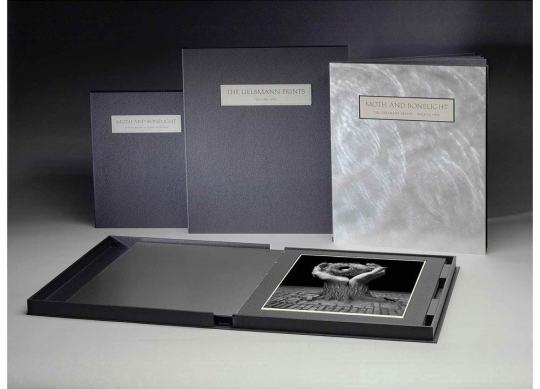
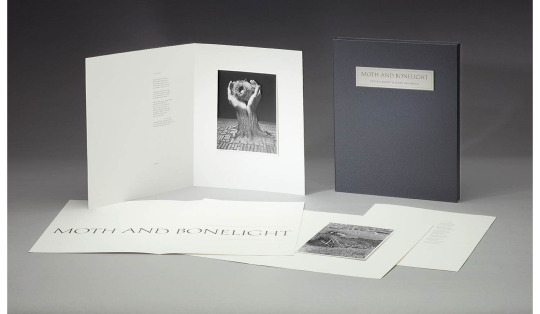
Moth and Bonelight Photographs by Jerry Uelsmann Poems by Steven Brown Introduction by John Wood Handcrafted in New England
The Silver Edition: 20 numbered and 5 lettered copies 10 removable 20 x 16 inch signed silver gelatin prints 24 x 20 inch aluminum binding by Daniel Kelm
The Platinum Edition: 55 numbered and 15 lettered copies 10 tipped-in platinum prints, roughly 12 x 9 inches mounted to 18 x 14 inches
https://www.21steditions.com/artists#/jerry-uelsmann

1 note
·
View note
Photo

Tauba Auerbach American artist introduces the 8 x 8 x 8-inch hard-back book cubes highlighting the color spectrum by digital offset printing in a page-by-page medium. It is done with digital offset printing on paper and with an airbrushed fabric cover and book edges, which produces a vivid reference amount with all the colors of nature.
The book named “RGB Colorspace Atlas” was co-designed by the artist herself in partnership with Daniel E. Kelm, and it was printed in a wide-awake garage.
0 notes
Text

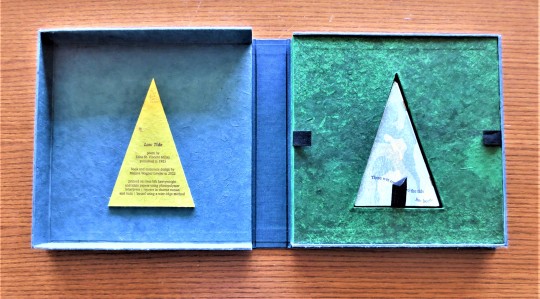
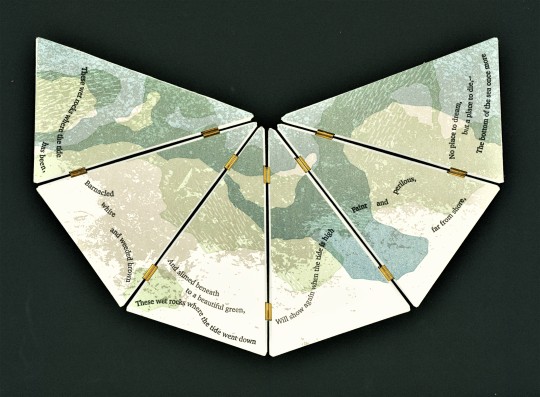


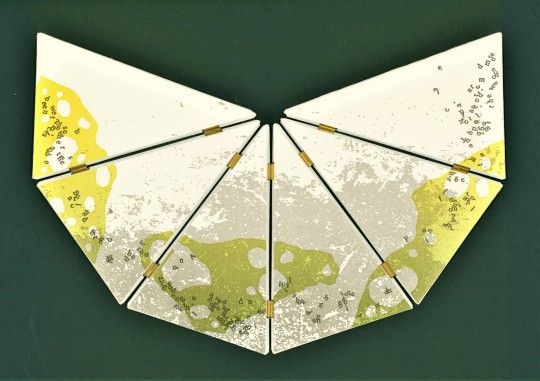

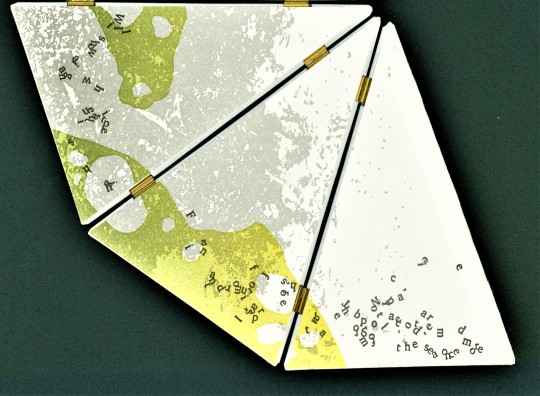
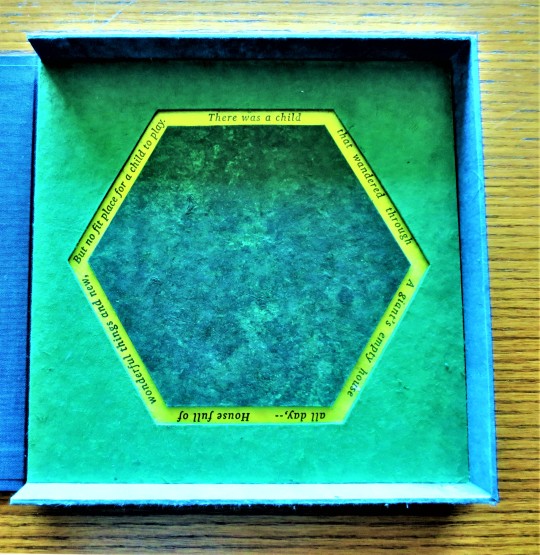
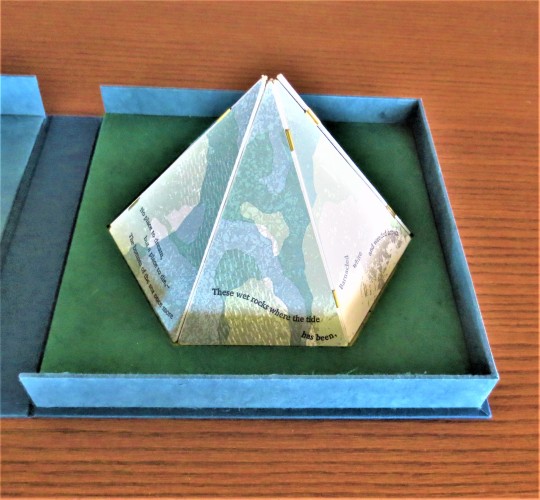
It's Fine Press Friday!
For this fine-press end of the week we present an artists-book rendition of Edna St. Vincent Millay's 1921 poem Low Tide by our very own Melissa Wagner-Lawler. Melissa is an Associate Lecturer in the UW-Milwaukee Department of Art & Design where she teaches 2D Concepts, Printmaking, and the Book Arts.
Low Tide was produced in Milwaukee in 2022 in an signed edition of ten copies. The type is Charter Roman and Italic and the pages were printed letterpress using photopolymer plates on Rives BFK heavyweight and lokta papers. The triangular book is bound using a wire-edge method invented by Massachusetts binder and structuralist Daniel Kelm. This type of binding allows for maximum flexibility where each page may be turned in opposite directions and allows the entire book to be opened and laid flat.
The first half of the poem is printed twice on both sides. On the exterior side, the poem is easily read, with each line or stanza flowing across the shoreline. On the interior side, the tide has receded and has washed the poem away. This half of the poem reads:
These wet rocks where the tide has been, Barnacled white and weeded brown And slimed beneath to a beautiful green, These wet rocks where the tide went down Will show again when the tide is high Faint and perilous, far from shore, No place to dream, but a place to die,— The bottom of the sea once more.
The book rests in a triangular cavity that is inset into a tray housed in a custom box. Removing the tray reveals an hexagonal trough where the book may placed as an hexagonal pyramid. Inside the trough is the remainder of the poem, which reads:
There was a child that wandered through A giant's empty house all day,— House full of wonderful things and new, But no fit place for a child to play.
View more posts related to Melissa Wagner-Lawler.
View more posts on artists books.
View more Fine Press Friday posts.
#Fine Press Friday#FIne Press Fridays#Melissa Wagner-Lawler#Low Tide#Edna St. Vincent Millay#letterpress printing#artists books#Charter type#Rives BFK#lakta paper#wire-edge binding#photopolymer plates#fine press books#poetry
49 notes
·
View notes
Photo
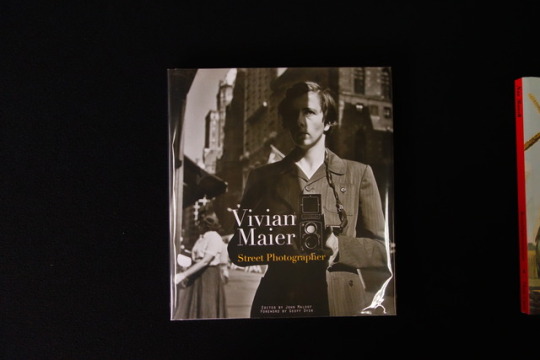
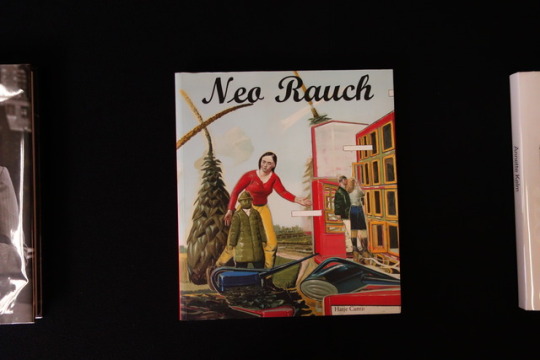

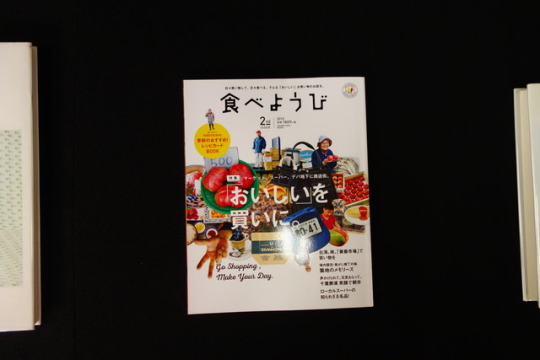
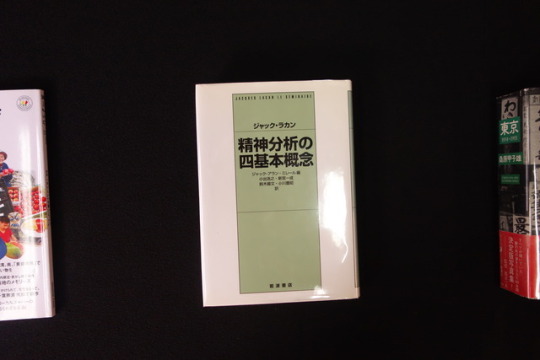
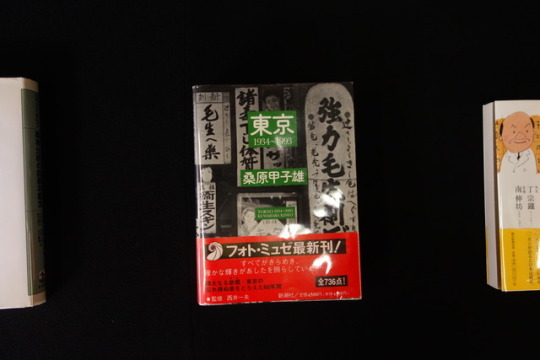
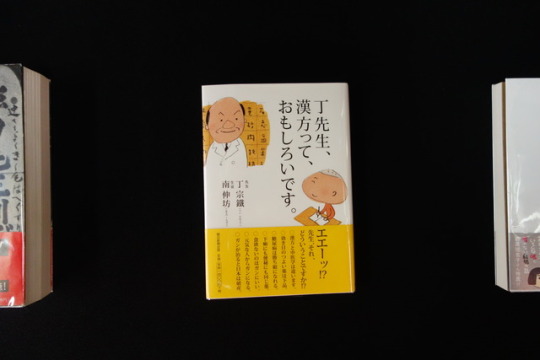


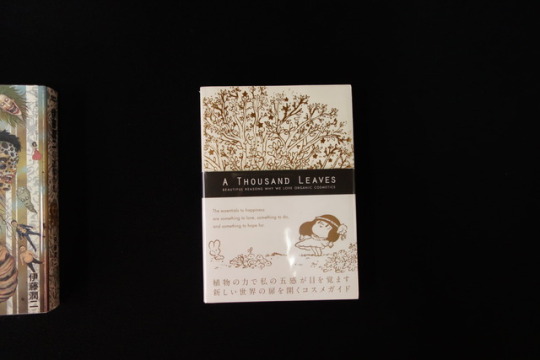
2017年7月30日
【新入荷・古本】
John Maloof+Geoff Dyer『Vivian Maier: Street Photographer』(powerHouse Books、2011年)
Neo Rauch+Daniel Birnbaum+Lynne Cooke『Neo Rauch』(Hatje Cantz Verlag、2003年)
Susanne Pfeffer+Beatrix Ruf+Nicolaus Schafhausen『Annette Kelm』(Koenig Books、2009年)
『食べようび 2nd ISSUE』(オレンジページ、2015年)
ジャック・ラカン+ジャック=アラン・ミレール『精神分析の四基本概念』(岩波書店、2000年)
桑原甲子雄『東京 1934~1993』(新潮社、1995年)
丁宗鐵+南伸坊『丁先生、漢方って、おもしろいです。』(朝日新聞出版、2014年)
末井昭『結婚』(平凡社、2017年)
伊藤潤二『伊藤潤二自選傑作集』(朝日新聞出版、2015年)
本間裕子+ウイスット・ポンニミット『A THOUSAND LEAVES』(千葉北図書、2011年)
2 notes
·
View notes
Text
Books On Books Collection - Carol Barton
Land Forms and Air Currents (2014) Land Forms and Air Currents (2014) Carol Barton Leporello (with 11 pop-ups) fixed to inside cover of case, cloth over board, debossed with fitted, pastedown artwork on front cover and spine. Cover: H292 x W192 x D50 mm. Leporello: H275 x W175 mm. 37 panels. Edition of 25, of which this is #21. Acquired from the artist, 27 October 2023. Photos: Books On Books…

View On WordPress
#Carol Barton#Charles Darwin#Chris Ruston#Daniel E. Kelm#Denis Diderot#Diane Shaw#Diane Stemper#Domenico Fontana#Doug Beube#Ed Hutchins#Erwin Huebner#George Gessert#Jean le Rond d”Alembert#Jordan Scott#Joyce Cutler-Shaw#Karen Wirth#Laura Davidson#Philip Zimmermann#Robert Hooke#Robin Price#Scott McCarney#Stephen Collis#Susan Happersett#William Gilbert
0 notes
Text
Michele Ferrari, primera condena penal tras años en mundo del dopaje
Roma, 5 abr (EFE).- La condena del doctor Michele Ferrari a 18 meses de reclusión por un Tribunal italiano por dopar al atleta de biatlón Daniel Taschler le acaba de proporcionar su primera sanción penal tras casi veinte años de acusaciones. Ferrari se vio involucrado en algunos de los casos de dopaje que más resonancia tuvieron en el mundo, como el del estadounidense Lance Armstrong, aunque hasta la decisión del lunes del Tribunal de Bolzano (norte de Italia) no le había sido dado ningún tipo de castigo penal. Para el doctor italiano fue fatal la colaboración con Daniel Taschler, especialista de biatlón e hijo de Gottlieb Taschler, que fue vicepresidente de la Unión Internacional de Biatlón. Fue el propio padre de Taschler quien recomendó a su hijo trabajar al lado de Ferrari, a pesar de que éste ya hubiera sido suspendido de por vida por la Agencia Antidopaje Americana (USADA) tras los escándalos ligados a Armstrong. Las investigaciones sobre la familia Taschler habían empezado en el ámbito de un programa de la Fiscalía de Padua y pasaron sucesivamente al departamento de Bolzano, que tomó la decisión de sancionar a Ferrari tras escuchar unas interceptaciones. En las conversaciones, el doctor da informaciones a Daniel Taschler sobre cómo conseguir y usar de forma eficaz el Eritropoyetina (EPO). Sin embargo, este no fue el primer proceso en el que estuvo involucrado Ferrari. En 2004, el Tribunal de Bolonia había sancionado al doctor con once meses de suspensión de su profesión por escándalos que se remontaban a 1998, cuando había suministrado a varios ciclistas el EPO y otras sustancias que mejoraban sus prestaciones. Uno de esos atletas, entre los cuales estaba también el español Abraham Olano, confesó esos acontecimientos en el ámbito de las investigaciones y provocó la sanción para Ferrari, aunque esta nunca se aplicó. Olano fue acusado en 2013 de haberse dopado bajo el control del doctor italiano durante el Tour de Francia de 1998, aunque el propio corredor rechazó con fuerza esas suposiciones, alegando que nunca ha dado positivo en un control. Juntos con el ciclista guipuzcoano estuvieron los también españoles Manuel Beltrán (en ese momento compañero de Olano en el equipo Banesto) y Marcos Serrano (Kelme). Pero la figura de Ferrari se hizo particularmente famosa tras su colaboración con Lance Armstrong, siete veces ganador del Tour de Francia, títulos que le fueron anulados por el Comité Olímpico Internacional (COI) y la Unión Ciclista Internacional tras las investigaciones del USADA. El doctor italiano suministró durante años sustancias como el EPO y la Testosterona al corredor de Texas para mejorar su rendimiento, según informaron a la USADA varios ciclistas del equipo US Postal. Sin embargo, tras casi veinte años de acusaciones, Ferrari recibió una sanción penal, lo que prevé además una compensación de 15.000 euros a la Agencia Mundial Antidopaje (WADA), que se había constituido parte civil en el proceso. "El resultado logrado por el Tribunal de Bolzano es de gran importancia de cara a la lucha contra el dopaje", explicó a los medios locales el abogado Marco Consonni, que defendió la WADA en este proceso. Entre los demás ciclistas que colaboraron con Ferrari están el belga Axel Merckx, hijo de Eddy, el español Fernando Escartín, el suizo Tony Rominger, el australiano Cadel Evans o Mario Cipollini. EFE
#_author:am/jam/jl#_revsp:efe.es#_uuid:ff1cce16-a2de-3b82-852f-249babf98abe#_lmsid:a077000000Kgol7AAB
1 note
·
View note
Photo
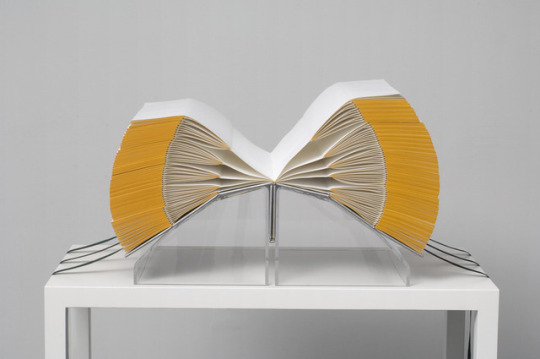
Tauba Auerbach, 1,11,121,1331, 2011, Mohawk superfine paper, acrylic paint, cloth, ribbon, Variable Dimensions - Closed Approx 16 x 16 x 16 inches, 40.6 x 40.6 x 40.6 cm, Open Approx 16 x 23.25 x 11.75 inches 40.6 x 59.1 x 29.8 cm, Binding construction by Daniel Kelm, Photo: Gary Mamay
1 note
·
View note
Text
Coming soon to a mailbox near you…
What an odd-duck community we are: students and practitioners of the book crafts, devoted to a centuries-old technology and the arts that adorn and grow out of it, even as the twenty-first century’s information crackles through the very ether. New portals and modes of communication are burgeoning around us, and this Guild of Book Workers blog is one of them, offering us a new opportunity to increase our contact and conversation with each other, encouraging us to further exchanges of ideas.
Amid all this humming activity, what more bold communication experiment could we imagine than re-envisioning an actual print journal? A deliver-it-by-mail, pull-it-from-the-mailbox, hold-it-in-your-hands, turn-the-pages, good old-fashioned booklike sort of thing. It almost seems crazy. And yet, we’re committed to the physical book for a host of reasons, all of which are up for lots and lots of animated discussion of the old-fashioned sort (phone conversations) and the older-fashioned sort (letters) and the newfangled sort (online) and the oldest-fashioned sort of all (talking).
Here, on this blog, the newfangled joins hands with the classic. Any day now, Guild of Book Workers members will open their mailboxes and find a copy of the newly redesigned, reconceived Journal. (Not a member? Order a copy here, or better still, join here!) Look at it, read it at your leisure, mull it over, then discuss it. That’s the best part of the experiment: It doesn’t end with the printed page. It only begins there. It continues here with your comments. Future posts will invite conversation about particular articles; right now we want to hear anything and everything you have to say about this issue.
Cara Schlesinger, Editor

Table of Contents
The Education of Daniel Kelm / by Alegria Barclay, with a gallery of bindings and artist’s books by Daniel Kelm
Daniel Kelm is best known for his innovative and thought-provoking artist books. However, he is as talented a teacher as he is an artist. And as a man of myriad talents, he has devoted his life to sharing his passion with others.
Mary Crease Sears: A Complete Bookbinder / by Kristin Parker
Mary Crease Sears was a Boston bookbinder, active from about 1900, taking commissions until her death in 1938. Almost nothing has been written about her in the surveys about bookbinding history in America. Attention was paid to women bookbinders through the annual Expositions held in various cities, implying that bookbinding at the turn of the century straddled the line between fine art and industry. Do we know little about Sears because she chose to concentrate on individual commissions, rather than publishers bindings, which were produced in quantity?
Ergonomics and Injury Prevention in the Book and Paper Lab / by Douglas Sanders and Nicole Wolfersberger
Book and paper conservators complete their work with small and precise tools performing detailed, repetitive tasks. The tools are tailored to the job, rather than to the physical needs of the worker. This, combined with problematic workspace and poor posture and work habits, may contribute to repetitive strain injuries that, if left unchecked, can become more and more serious with time. But the causes of repetitive strain injuries in the book and paper lab can be identified, and the effects can be curbed.
The Pilgrimage: Journey to a World of Books in Spain / by Wilfredo A. Geigel
Serious bibliophiles or booklovers should travel to Spain for a visit to its archives and libraries at least once in their lifetime with no less devotion than that of the Muslims in their required visit to Mecca as prescribed by Islamic law. The trove of magnificent manuscripts and printed works preserved in the Spanish institutions is emblematic of the artistic and cultural richness of the Iberian Peninsula, a feat that is difficult to equate or surpass by many other countries.
Der Pressbengel/The Bone Folder: A Dialogue Between an Aesthetically-Inclined Bibliophile and a Well-Versed-In-All-Aspects-of-the-Craft Bookbinder by Ernst Collin / Translated and introduced by Peter D. Verheyen
Der Pressbengel, by Ernst Collin, was originally published in German in 1922. This is its first translation into English. Conceived as a dialogue between a bibliophile and a master bookbinder on all aspects of the bookbinding craft as well as specific techniques, the text also addresses the conflicts between quality and cost and matters of good taste. An introduction by the translator discusses the historical context of the decline of formal training, a trend that continues today.
Where Does the Catalog Go? Surveys of Old Printed Books, What We Can Learn from Them, and Why They Matter / by Matthew Davis
There is a danger in approaching electronic versions of early printed texts in the same way we might a modern text: Early hand-printed books often contained multiple errors that were corrected throughout the print run. If these works are digitized, readers and scholars may run the risk of mistaking any single electronic version as authoritative. The case of the 1679 Works of that Famous English Poet, Mr. Edmund Spenser shows why comparison of the errors in all available copies of a text is necessary before authoritative status can be determined.
Exploring the Book(Cases): The Art of Books, Museums, and Digital Culture / by Courtney Weida
Artists’ books are a unique metaphorical threshold between text/narrative and image/object with rich poetic, visual, and tactile content. Within the context of a museum, these handcrafted and handheld artifacts of material culture offer a window into the potentialities and problems of the book arts, particularly in the overlapping contexts of digital culture.
Accordion and Tunnel Books: Twenty Years of Exploration and Constructing a Tunnel Book / by Randolph Huebsch
Accordion and tunnel books are centuries-old structures whose basic simplicity allows for wide and playful experimentation. Book artists are increasingly exploring these forms, drawing on methods from etching to cut paper to photocopying and beyond, and ranging in size from a single sheet of paper to larger-than-life interactive sculptural works. The possibilities arising from the combination of panels, accordion strips, and hinges are endless.
0 notes